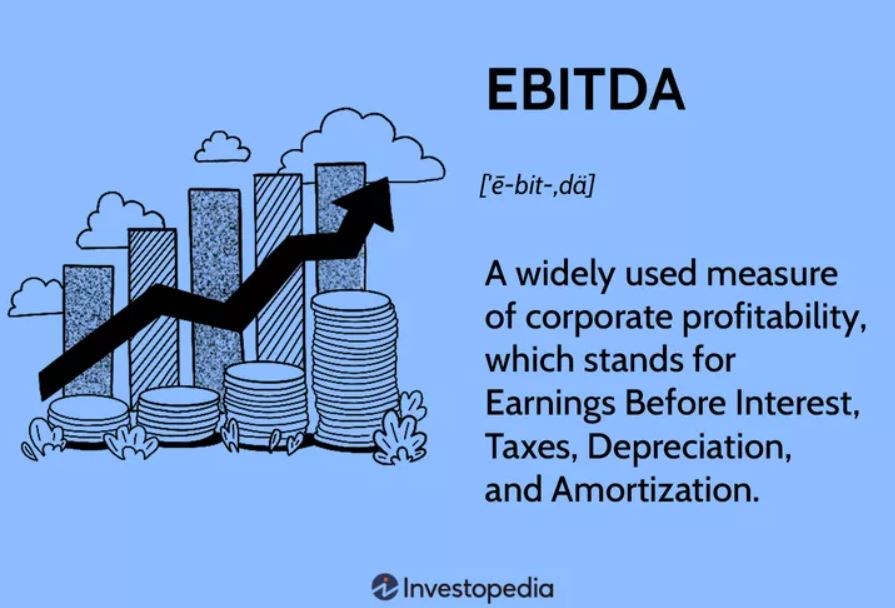- The Bottom Line, Up Front
- First, Ask Yourself a Few Questions
- When Selling Makes Sense
- When Shutting Down Makes Sense
- Pros of Selling Your Business
- Disadvantages of Selling Your Business
- Pros and Cons of Shutting Down Your Business
- Valuation Basics for a Sale
- The Sale Process at a Glance
- The Shutdown Process at a Glance
- Taxes: The Complicated Part That Changes the Net
- People: The Hardest Part – But It Can Be Done Well
- Customers and Vendors
- Risk and Liability: Don’t Trip at the Finish
- It’s Okay to Ask for Help
- Common Mistakes I See (and How to Avoid Them)
- A Note on Owner Identity
- What About Merging?
- Quiet Outreach, Not a Parade
- Bottom Line
Last Updated on October 18, 2025 by Ewen Finser
As a CPA who spends a lot of time with owners at major crossroads, I’ve often helped guide business owners on what to do with their life’s work. Some arrive in my office with a tired look and a shoebox of receipts ready to toss in the towel, and others bring dashboards, excel sheets, and prepped financials (these are my favorite clients). Regardless of their different styles, they often ask the same question: “Should I sell the business or shut it down?”
It’s a hard call that goes beyond numbers, and often features a blend of qualitative and quantitative factors. It’s also one you can make with a clear framework, sound numbers, and a sober view of your goals, which is where I come in.
The Bottom Line, Up Front
In my opinion, it’s best to decide to sell if your cash flow is transferable without you, your books are clean, and buyer demand exists. You should optimize for after-tax net, not headline price. On the other hand, choose to shut down if losses, key-person risk, or compliance exposure outweigh sale value. This mindset prioritizes a fast, lawful wind-down and clean final filings. You should also run a side-by-side of asset sale vs. stock sale vs. liquidation to see what you get to actually keep after taxes and debt payoff. Set a firm decision date, protect employees and customers with clear plans, and keep outreach quiet; if testing the market, a focused broker (e.g., Quiet Light) can gauge buyer interest without spooking your team.
First, Ask Yourself a Few Questions
1. Why Am I Here?
List the root causes on why you’re considering selling vs. shutting down. Is it flat demand? Rising input costs? Owner burnout? Loss of a key customer? A new competitor? A partner dispute? A need for cash for other goals?
2. What Are My Options?
- Sell the company (full or partial).
- Wind down and liquidate.
- Pivot the model and hold.
- Merge with a peer.
3. To Me, What Would Success Look Like?
If you can dream it, you should name it here. Anything from a debt-free life, to a new venture, to retirement. Do I want more time with my family, or do I want to return to a W-2 job with less risk?
4. What Do The Numbers Say?
There are three categories of numbers you need to consider.
- Today: cash, debt, AR, AP, payroll, taxes, contracts.
- Run-rate: next 12 months if you keep operating.
- Shutdown vs. sale: proceeds, costs, taxes, and timeline for each path.
You now have a base to work from. Keep this page in front of you as you read the rest.
When Selling Makes Sense

You should consider a sale if:
- The business has transferable cash flow that does not rely on you alone.
- The customer base is diversified and under contract or shows repeat behavior.
- Processes and systems exist (even if simple) and someone else can run them.
- The brand or book of business has value to a buyer: scale, cross-sell, or market entry.
- You want liquidity more than you want control.
A sale is not only for high-growth companies. I’ve seen small services firms sell for solid multiples because they kept clean books, had stable recurring revenue, and ran a tidy operation. The buyer wanted a bolt-on, not a moonshot.
When Shutting Down Makes Sense
You should consider closing if:
- Cash burn is steady and no clear fix exists within a few months.
- The value lives in you, not in systems; a buyer would struggle to replace you.
- Legal and compliance risk is rising while margins shrink.
- Market shifts have eroded the core value and a turnaround would be long and costly.
- You want a clean slate and peace of mind.
I need to harp on this, so I am specifically calling it out. Closure is not failure. It’s a choice to stop compounding losses and to protect your future. The best closures are quiet, quick, and lawful. The worst drag for months and drain savings and morale.

Pros of Selling Your Business
- Liquidity: You can turn years of effort into cash or stock.
- Continuity for staff and customers: A buyer keeps the lights on for your employees and customers.
- Transfer of risk: Market and regulatory risk shift to the new owner.
- Potential upside: Earn-outs or rollover equity can pay more over time.
- Validation: A purchase price signals market value.
Disadvantages of Selling Your Business
- Process and timeline: Diligence takes time and energy. It will distract you.
- Disclosure: You must open the books and answer tough questions.
- Deal risk: LOIs fall through. Multiples move with credit markets.
- Post-sale obligations: Non-competes, transition periods, or performance targets.
- Taxes: Asset vs. stock sale treatment can swing your net by more than you may expect.
My CPA note: Don’t anchor on “a friend sold for 5x.” Multiples follow risk, quality of earnings, and buyer type. Clean financials and a tight story can add a turn or two to your valuation.
Pros and Cons of Shutting Down Your Business
Pros
- Speed and control: You pick the timeline. You set the plan.
- Lower stress: No deal dance. No earn-outs to chase.
- Less legal complexity: No reps and warranties. Fewer ongoing duties.
- Clarity: You close the chapter and redirect your energy.
Cons
- No goodwill monetization: You may harvest assets but leave brand value on the table.
- Employee impact: Layoffs, severance choices, and morale issues.
- Customer disruption: Open projects and support obligations need resolution.
- Contract penalties: Early termination fees or clawbacks can apply.
- Tax consequences: Liquidation gains, recapture, payroll and sales tax clean-up.
- Reputation: Vendors and lenders remember how you handled the end.
- Owner psychology: Closure can feel like a loss, which can cloud decisions.
If you plan to close, you still need a project plan, but we’ll get to that shortly.
Valuation Basics for a Sale
Buyers pay for normalized earnings they can count on. The common yardstick is SDE (seller’s discretionary earnings) for very small firms and EBITDA for larger ones.

Normalize Your Earnings
- Remove one-time costs and owner perks that will not continue.
- Add back market-rate wages for replacement roles.
- Adjust for unusual revenue spikes or drops.
- Confirm gross margin and customer retention with data.
Drivers of Higher Multiples
- Recurring revenue with low churn.
- Diversified customers and suppliers.
- Documented SOPs and a stable team.
- Clean books and timely monthly closes.
- Low working capital needs.
Things That Pull Multiples Down
- Customer concentration (this broadcasts risks).
- Declining trends or key-person risk.
- Poor documentation or messy books.
- High capex or heavy working capital.
CPA tip: Complete a light quality of earnings (QoE) review before going to market. It’s cheaper to find and fix issues yourself than to defend them mid-deal.
The Sale Process at a Glance
- Preparation (4–12 weeks)
Close the books, build up your data, document SOPs, and draft a one-page deal story. - Go to market (4–10 weeks)
Confidential outreach to qualified buyers through a broker or advisor. I always advise for clients to keep this under wraps until they’re certain they want to sell. A great way to do this is to use an online broker that is discreet. - Indications and LOI (2–6 weeks)
Compare price, structure, and terms. Negotiate working capital and earn-outs. - Diligence (6–12+ weeks)
Financial, legal, operational, and customer diligence. Expect requests for information, and make sure to answer fast. - Close and transition (2–8 weeks)
Sign, fund, and handoff. Focus on customers and staff during the first 90 days.
A quiet, efficient process protects value. Sloppy prep kills deals.

The Shutdown Process at a Glance
- Plan the wind-down
Create a schedule of key dates: last day of operations, final payroll, vendor notices, and utility shut-offs. - Legal compliance
Review leases, contracts, licenses, and permits. Follow state dissolution rules. - People plan
Decide on severance, benefits end dates, and references. Communicate with respect. - Customer wrap-up
Complete open jobs or hand them to a trusted provider. Set up support for a short period if needed. - Asset disposition
Sell inventory and equipment. Collect receivables. Return deposits. - Tax filings
File final income, payroll, and sales tax returns. Cancel registrations. - Final accounting
Pay creditors in order of priority. Document everything. Keep records.
A good wind-down should feel like landing a plane, not jumping from it.
Taxes: The Complicated Part That Changes the Net
Structure and taxes decide what you keep, not just what you “sell for.” In my personal experience, it seems like people forget that Uncle Sam is going to come for his cut, leaving you with less than you anticipated.
- Asset vs. stock sale: Buyers often prefer asset deals for step-up in basis and lower risk. Sellers often prefer stock deals for capital gains and clean separation. If it’s an asset sale, the allocation (Section 1060) across goodwill, equipment, and inventory sets your tax bill. Negotiate this early.
- Depreciation recapture: Gains up to prior depreciation on Section 1245 assets are ordinary income. That surprises owners who expected long-term capital gains rates.
- State taxes: Tax nexuses, apportionment, and state filing rules differ. Don’t “forget” the states where you have sales or payroll.
- Payroll and sales taxes: These must be clean before a sale or closure. Trust fund taxes follow you.
- Liquidation vs. distribution: In a shutdown, entity type matters. C corps can face double tax on liquidation. S corps and LLCs pass gains to owners with basis adjustments.
CPA tip: Run a side-by-side after-tax analysis of three paths: (1) asset sale, (2) stock sale, and (3) orderly liquidation. Use conservative assumptions. The “headline price” often loses to the “net in hand.” Or, better yet, hire a CPA who can do this for you. It may be expensive up front, but the results are worth it!

People: The Hardest Part – But It Can Be Done Well
Your team carried the load with you. They deserve respect, and to be treated well. Without them, you wouldn’t have a business.
- Timing: Don’t blindside staff. Share what you can when you can. Also, do everything you can to avoid rumors.
- Retention vs. severance: In a sale, use retention bonuses for key handoffs. In a closure, set fair severance where possible.
- Benefits: Explain timelines and options in writing.
- References and support: Offer letters and introductions to other players in the space are always appreciated. Keep phones open.
- Morale: In both paths, the tone you set will echo in your customer base and community.
Customers and Vendors
- Customers: In a sale, tell them why the buyer helps them. In a closure, give notice, complete open work, and provide referrals if possible. Keep it short and kind.
- Vendors: Negotiate final buys and returns. Pay what you owe. Ask for grace where needed. Future you might need these relationships again.
- Landlords and lenders. Don’t hide the ball. Read covenants. Many deals hinge on consent rights you signed years ago.
Risk and Liability: Don’t Trip at the Finish
- Contracts: Know which agreements are assignable. Some require consent for a sale. Budget time for this.
- Warranties and reps: In a sale, reps and warranties survive for a period. Tail insurance (RWI) can help, but it requires solid diligence.
- Data and IP: Inventory your systems. In a closure, archive records for the statutory period and destroy what you should not keep.
- Compliance: Licenses, permits, trust accounts, and client funds need clean handling. Missteps here can haunt you.
It’s Okay to Ask for Help
If you decide to test the market, use a broker who understands your size and industry. They should screen buyers, protect confidentiality, and help set realistic terms. I’ve seen firms like Quiet Light run a focused process with well-qualified buyers and a steady hand. You still need clean books and a clear story, but a guide helps when emotions run high.
Common Mistakes I See (and How to Avoid Them)
- Waiting too long: Owners burn cash while they “think about it.” Set a deadline to decide. Every month costs you money and leverage.
- Over-reliance on verbal deals: If it’s not in a signed contract, it’s not real. Document milestones, customer commitments, and any handshake earn-outs. A broker can help cut through the smoke.
- Messy books. You cannot sell or close cleanly with unreconciled accounts. Get a bookkeeper or CPA to help you button up.
- Ignoring taxes until the end. Structure early. Allocation and entity decisions can swing your net by six figures.
- Telling everyone too soon. Control your narrative. Share need-to-know information until a deal is firm or a closure plan is set.
- Forgetting working capital in deals. Buyers expect a normal level of working capital at close. If you drain it, price adjusts.
- No contingency plan. Always have a Plan B. If a sale stalls, you need a wind-down path ready.
A Note on Owner Identity
This is personal work. Your name and energy live in this thing. Selling can feel like handing over a child. Closing can feel like grief. Both are normal. Set time to process, then act. The best outcomes follow firm decisions and steady execution.
What About Merging?
A merger with a peer can keep your brand alive and give you partial liquidity. It can also create new complexity. If you like the industry but not the solo grind, a merger can be a middle path. Treat it like a sale with shared control: diligence each other, align incentives, and write clear exit terms. I often recommend folks use a broker, either in person or an online one to help navigate this path as it can be more complex than just selling or shutting down.
Quiet Outreach, Not a Parade
You don’t need a noisy auction to find a fit. Targeted calls to logical buyers often beat a “broad blast.” This protects your team, your customers, and your brand. A good broker can help you do that. One or two clean conversations can tell you most of what you need to know about market appetite.
Bottom Line
You have two honest paths:
- Sell if the business is transferable, the numbers hold up, and a buyer can take it further. Prepare well, keep the circle tight, and focus on the after-tax result, not the headline price.
- Shut down if cash burn and risk outweigh the value of a sale, or if you want a clear finish line. Plan the wind-down like a project. Pay people fairly. Close out taxes. Leave clean records.
Both choices can be wise. The right answer sits at the intersection of your goals, your numbers, and your appetite for one more season of work. Write down your goals, run the after-tax scenarios, and set a decision date. Then move with purpose. As a CPA who has sat with many owners at this fork in the road, I can tell you: a clear, orderly decision beats a season of drift every time.

